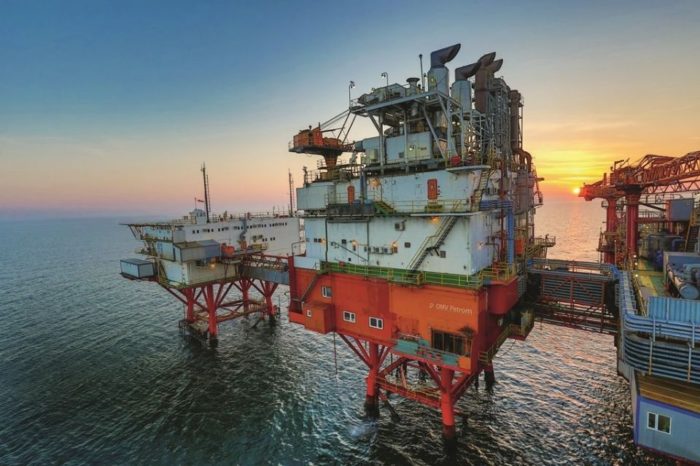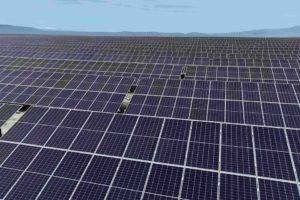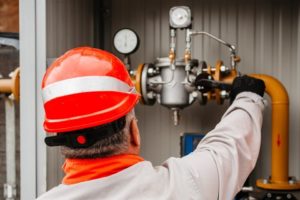EPG: “It is imperative to develop a national hydrogen strategy”

Study by Energy Policy Group (EPG)
Decarbonising the EU economy will most of all require direct electrification of over 60% of end-uses, based on energy efficiency considerations. However, this will not always be technically possible or cost-efficient. Decarbonised molecules, such as hydrogen, will also contribute to eliminating ‘stubborn emissions’ in hard-to-abate sectors such as high-temperature heat and feedstock in industry, aviation and long-haul shipping, and possibly large-scale district heating and long-term electricity storage, thus increasing the flexibility and resilience of the energy system.
There seems though to be a level of confusion among domestic actors about the role that hydrogen is to play in decarbonisation. In Romania, hydrogen is portrayed as a silver bullet towards a decarbonised future in sectors looking to find their place in a landscape shaped by the European Green Deal. However, as argued in the present report, its real impact will greatly depend on the country’s economic strategy and costs of technology.
In Romania, the most promising hydrogen uses are in industry (steel, ammonia, fertilisers, refineries, and high value chemicals), transport (long-haul aviation, maritime shipping, HDVs and some railway segments), existing district heating systems and, potentially, long-term or seasonal energy storage beyond 2030. Other uses, such as gas blending or green hydrogen use in CCGTs are rather a waste of economic value, given the comparatively high costs of producing hydrogen.
The Romanian authorities announced the intention to release a national hydrogen strategy in 2022. This will be an opportunity to make informed and comprehensive decisions regarding the future of hydrogen, including on uses, as opposed to the current patchwork of uncoordinated and poorly designed initiatives. The strategy should be developed based on the active involvement of public and private stakeholders, with targets and potential funding sources.
Finding economically viable opportunities for sector integration based on best practices in R&D
cooperation and commercial projects will be imperative to the development of a Romanian hydrogen industry. From the outset, there ought to be a solid business case for the hydrogen value chains that are set to expand once funding opportunities become available and technology costs decrease. Based on considerations regarding carbon intensity, cost and availability, green (a.k.a. clean or renewable) hydrogen is the most promising for delivering the goals of decarbonisation on the long term. Pink hydrogen also promises near-zero GHG emissions, but factoring in the cost aspect, green hydrogen is on a clear path to significant cost reductions that render it competitive with fossil-based hydrogen by 2030. Therefore, the study argues that clean hydrogen should be the focus of the Romanian national hydrogen strategy.
Today there is still a cost gap between fossil-based and clean hydrogen. However, electrolyser CAPEX is expected to decrease from €1,060/kW (PEM) to €375/kW (PEM), and as low as €100/kW (alkaline). The current cost differences between the two electrolyser types in terms of cost and performance are likely to narrow in time as innovation and widespread deployment of various technologies will boost convergence towards similar cost structures. However, the cheaper alkaline electrolysers expected to be available by 2030 will likely be supplied by Chinese manufacturers, while the European hydrogen value chain will focus more on PEM electrolysers. Either way, by 2030, producing clean hydrogen will no longer be a CAPEX intensive business. The price of renewable energy becomes the main cost component, especially at medium to high electrolyser load factor.
Coupled with the decreasing cost of renewable energy, higher carbon price and elimination of free allocation of CO2 allowances, this will allow clean hydrogen to breakeven with fossil alternatives between 2028 and 2032 based on local renewable potential.
Two modelling scenarios analysed for this report, based on the Fit for 55 package proposals
regarding the use of clean hydrogen in industry and transport, show that between 1,470 MW and 2,350 MW of electrolyser capacity will need to be installed in Romania by 2030. This amounts to 3.7% and 6%, respectively, of the EU electrolyser capacity by 2030 targeted in the European Commission’s Hydrogen Strategy. When factoring in the additionality principle, this will require between 3 and 4.5 GW of new renewables to be installed besides the capacities included in the current National Energy and Climate Plan.
Based on an electricity price of €50/MWh, a reasonable if not conservative assumption for Romania in 2030, given the RES potential and expected cost reductions, the resulting levelized cost of hydrogen (LCOH) for alkaline electrolysis is between €2.21/kgH2 and €2.3/kgH2, while for PEM electrolysis it ranges from €2.34 to €2.73/ kgH2, depending on load factor. The LCOH can go down to as much as €1.38/kgH2 for alkaline electrolysis and €1.59/ kgH2 for PEM electrolysis in 2030 for an electricity price of €25/MWh. The only way of ensuring a stable and predictable source of low-cost electricity for the electrolysis units is long-term Power Purchase Agreements (PPAs) with multiple RES producers, or wholesale purchasing of electricity that comes with Guarantees of Origin (GOs). To respect the additionality principle, a temporal and geographical connection between the electrolyser and renewable capacity would also be needed.
Key strategic choices will have to be made in the upcoming strategy regarding hydrogen production pathways, location of sites, end-uses, and transport infrastructure. This report offers arguments about cost, carbon intensity, and availability for the Romanian authorities to focus on clean hydrogen, and to prioritise large-scale investments in renewable and electrolyser capacities. This would be fully compliant with the European pathway enshrined in the EU Hydrogen Strategy and Fit for 55 package provision and will help Romania capitalise on the major opportunities of developing new value chains as part of the energy transition.
It is imperative to develop a national hydrogen strategy. The strategy must identify the drivers in the sector and set priorities for production and identify pathways for use, costs, and deployment targets for 2030 and 2050. It ought to include a timeline for market development, a clear regulatory framework, and financial measures to support the development of the hydrogen sector and the associated value chains. The strategy should:
• Prioritize clean hydrogen from renewable electricity, since there is a clear cost-efficient pathway up to 2030, besides being optimal in terms of carbon intensity, availability, and sectorial EU renewable targets. The government ought to choose solutions in line with a net-zero GHG emissions by 2050 trajectory.
• Target the most promising uses for hydrogen: industry (feedstock, reduction agent, high temperature heat) and transport (maritime shipping, heavy-duty vehicles, long-haul aviation, and some railway segments), and long-term energy storage. Direct combustion of hydrogen should be avoided, given the low energy efficiency of the process. Therefore, the potential for hydrogen in the heating of buildings is expected to be limited, as it is not cost-effective for use in individual households.
• Involve public and private stakeholders to outline a strategic roadmap with targets and potential funding sources. Explore economically viable opportunities for sector integration based on best practices for international cooperation in R&D and commercial projects.
• Include a component dedicated to hydrogen for the transport sector, with clarifications regarding modes of transport, the role of the state, and the ways to finance that infrastructure. The role of synthetic fuels produced from clean hydrogen should also be included.
• Outline measures to develop the hydrogen value chain in Romania, particularly for electrolyser manufacturing. The education and R&D sectors should also be prioritised. Based on the initial development for the domestic market, Romania can aim to become an exporter of equipment and know-how to neighbouring markets. The national hydrogen strategy should be followed by a national industrial decarbonisation strategy and roadmap.
Romania should support the proposals for hydrogen deployment in the Fit for 55 package, especially those from the revised Renewable Energy Directive. The proposals are to achieve 40% RES by 2030, partly through a binding obligation on industry to cover 50% of feedstock and energy needs through RFNBOs, with a similar target of 2.6% RFNBOs proposed for the transport sector. Yet, as shown in this report, the 2030 ambitions for clean hydrogen can be higher, especially in the industrial sector. On the same basis, the additionality principle should be endorsed by the Romanian authorities as part of the delegated acts for the Renewable Energy Directive to be proposed by the European Commission.
Romania should implement a favourable legal and regulatory framework for investments in renewable energy sources. This is paramount for tapping into Romania’s potential to produce cost competitive clean hydrogen, which will require access to renewable electricity. In addition, Romania’s offshore wind potential should be thoroughly assessed, followed by the creation of a fair investment framework. The destination of financial support should reflect the high probability that by 2030, hydrogen production will transform from a CAPEX-intensive to an OPEX-intensive process, with the cost of electricity having the highest share in the cost structure of clean hydrogen.
It will be more efficient to incentivize renewable power generation assets and capital expenses for electrolysis units, both being upfront costs.
The government should introduce mechanisms allowing electrolysers to combine multiple electricity sources (through direct PPAs and/or Guarantees of Origin) to reach a sufficiently high load factor, and thus a more affordable clean hydrogen production.
• Lead-market creation instruments must be implemented, such as carbon contracts for difference (CCfD), hydrogen supply contracts, a Power-to-Liquid (PtL) quota for the aviation sector or a labelling system for climate-friendly basic materials.
• Given the country’s very good renewable energy potential, hence the significant potential to produce cost-efficient clean hydrogen, a strategic choice must be made between exporting clean hydrogen or using it locally to further develop downstream industries, such as green steel production. Romania should engage in “hydrogen diplomacy” to seize the opportunities for international hydrogen trading.
• Dobrogea must become a clean hydrogen valley. On the short term, it can become a local, medium-scale and industry-focused hydrogen valley, with potential for local clean hydrogen projects with several industrial off-takers as anchor load and potentially transport off-takers, replacing grey hydrogen supply, or more carbon intensive industrial processes. In the long-term Dobrogea can grow into a larger-scale, international and export-focused hydrogen valley, with the Port of Constanța as its centrepiece.
Full study here















